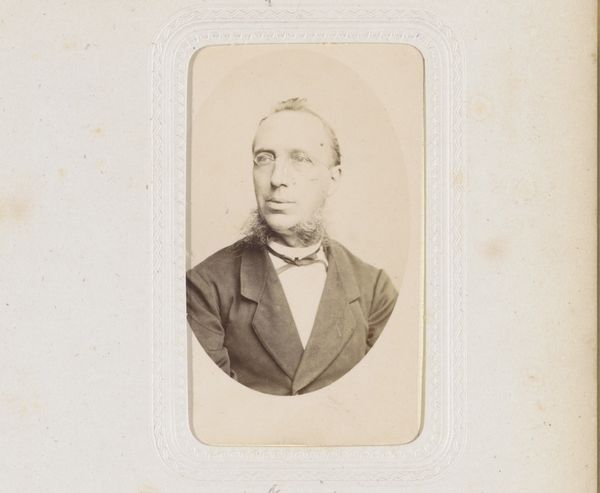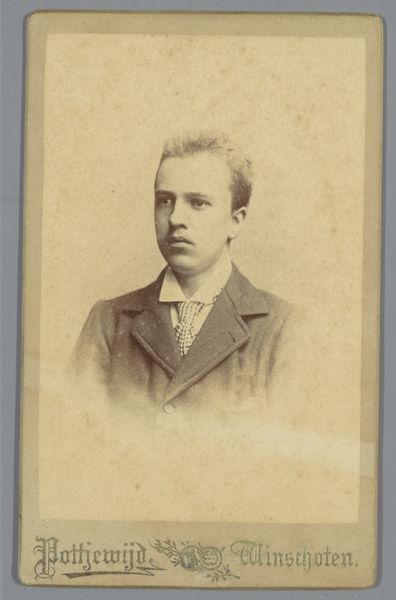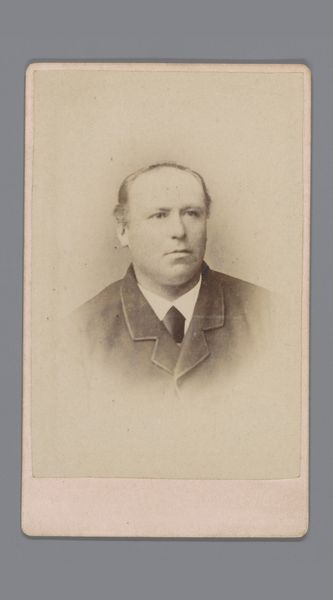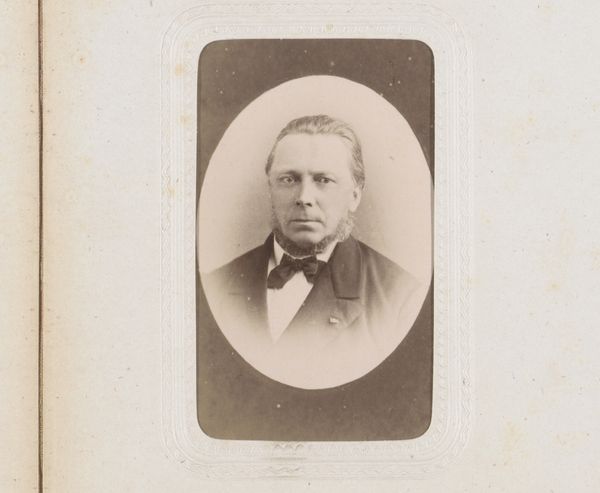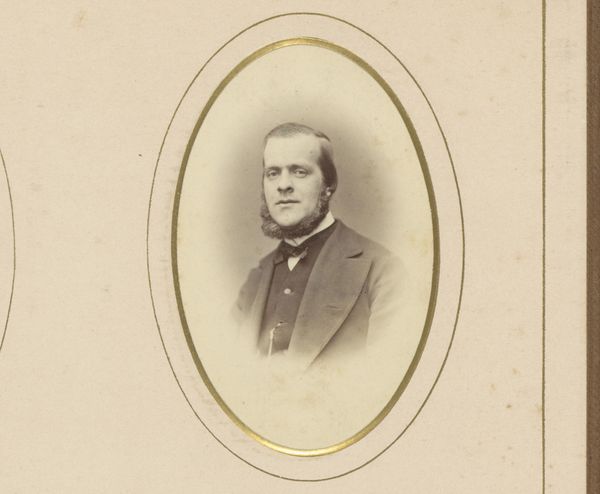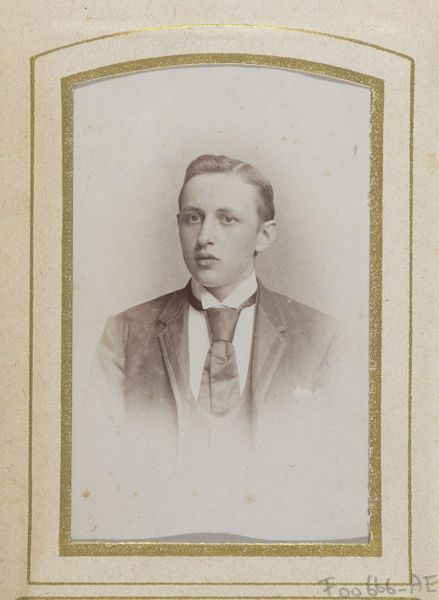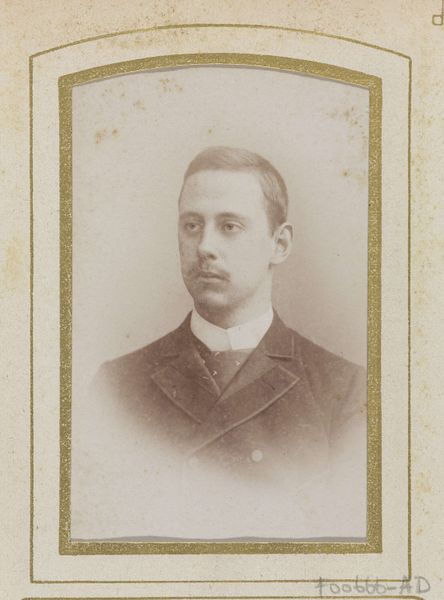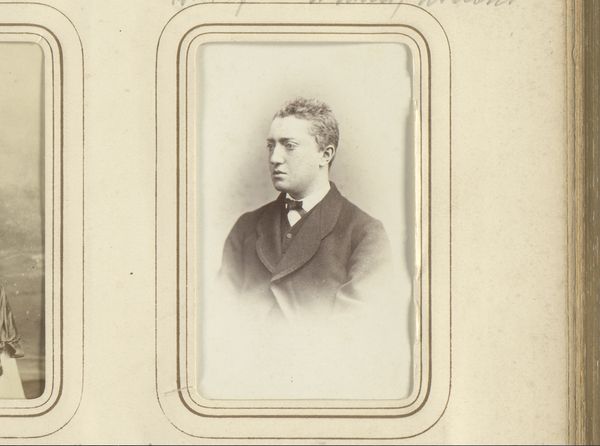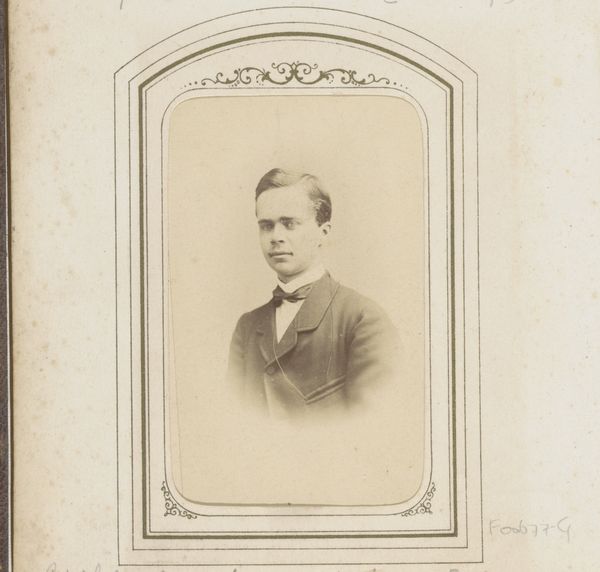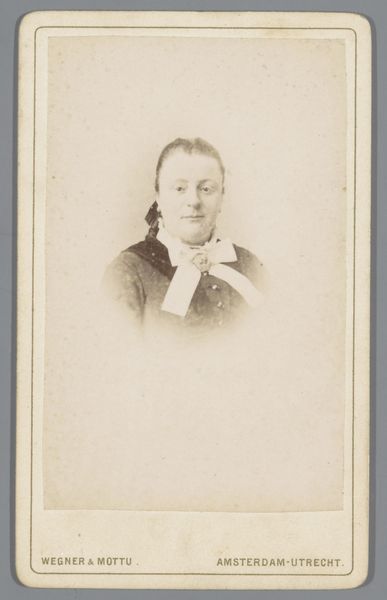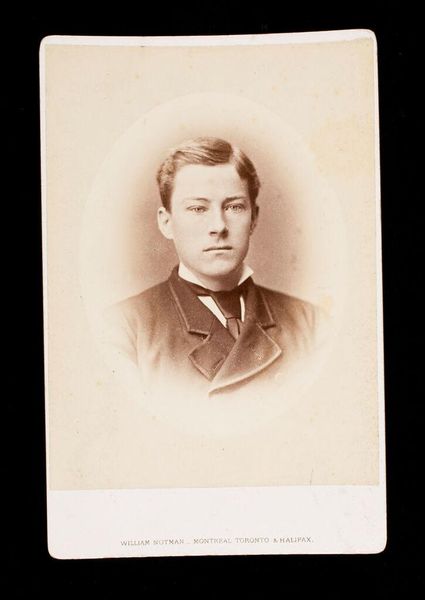
photography, gelatin-silver-print
#
portrait
#
photography
#
gelatin-silver-print
#
realism
Dimensions: height 106 mm, width 61 mm
Copyright: Rijks Museum: Open Domain
Curator: This is "Portrait of an Unknown Man," a gelatin-silver print from the period between 1866 and 1883, created by Théodore Gedoelst. Editor: Immediately, I’m struck by the muted tones, that almost sepia quality, and how that limited palette concentrates our focus on the subject's face and the intricacies of his formal attire. Curator: Absolutely. The albumen print process Gedoelst would have been using would highlight detail, creating a subtle and slightly faded tonal range, compared to what we see in modern prints. We are getting a sharp sense of texture because of the processes deployed, think about the labor to bring the photographic tools and chemical on site. Editor: You can see the subject, while posed, maintains a relaxed gaze, which engages the viewer in a quiet exchange. This man would most certainly be upper-middle class, you can observe it by his coat and the medallion hanging around his neck. What does this image express about the construction of identity? Curator: Good eye. In this period of Realism, photography began as an apparatus that sought to mirror lived experience by documenting reality; it quickly became crucial in molding and standardizing perceptions of self. Note that in terms of photographic production the cost to make such an image and who could afford the new commodity reflects the values in place. Editor: Indeed, there is also the conscious crafting and posing. It looks almost too constructed; perhaps even symbolic, to showcase status or professional affiliation through dress. His direct, almost clinical look projects confidence and a kind of serene composure. I see it as a carefully designed facade—all external. Curator: Yes, what we see presented speaks volumes about societal standards of the period. And the consumption of this image too. Editor: Thinking about his class status contextualized within 1860's Western Europe is, itself, revealing of the means of representation in that time, thank you. Curator: Of course. It’s important to consider how photographs became artifacts deeply intertwined with identity and cultural production as well.
Comments
No comments
Be the first to comment and join the conversation on the ultimate creative platform.
